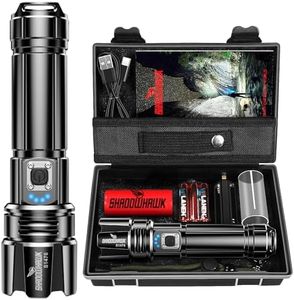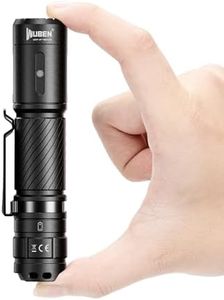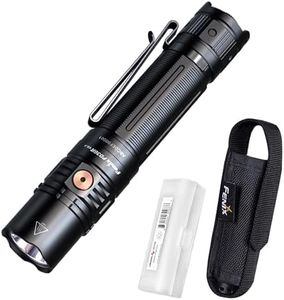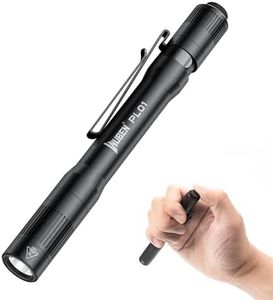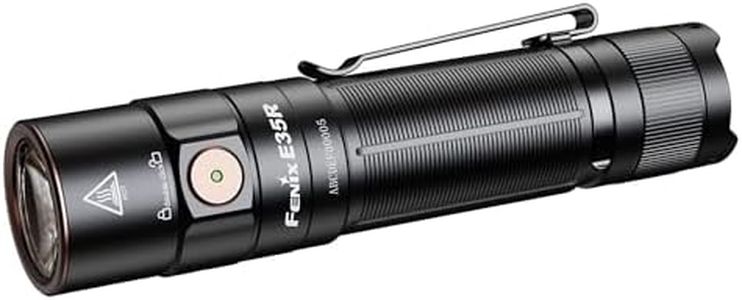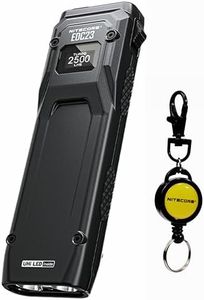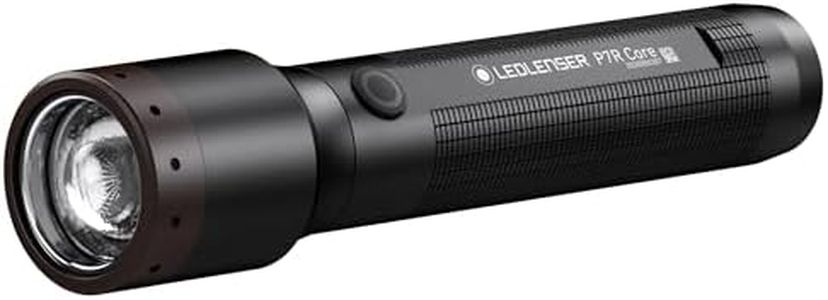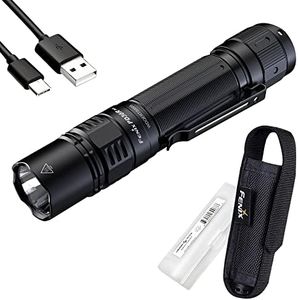We Use CookiesWe use cookies to enhance the security, performance,
functionality and for analytical and promotional activities. By continuing to browse this site you
are agreeing to our privacy policy
10 Best Brightest Pocket Flashlight
From leading brands and best sellers available on the web.Buying Guide for the Best Brightest Pocket Flashlight
Choosing the right pocket flashlight means understanding more than just brightness. While having a powerful beam can be important, other factors like size, battery life, beam distance, durability, and usability should guide you. Think how and where you’ll use your flashlight most: will you need it for outdoor adventures, emergencies at home, or as part of your everyday carry? Balancing different specs ensures you pick the flashlight that fits your daily needs, not just the one that’s the brightest on paper.Brightness (Lumens)Brightness is measured in lumens, which tells you how much visible light the flashlight produces. This spec is important as it decides how well you can see in dark areas. Flashlights with 20-100 lumens are good for reading or close tasks, while 100-300 lumens suit walking at night or general outdoor use. For searching or use in very dark environments, 300+ lumens might be necessary. Choose the right brightness by asking yourself how much light you really need—too much can drain batteries faster and be blinding up close, while too little makes the flashlight less useful.
Size and WeightSince this is a pocket flashlight, how easily it can fit and be carried matters a lot. Smaller, lighter models are convenient for daily carry and quick access, while slightly larger ones might offer more power or battery life. If you prefer comfort and everyday use, a compact and lightweight design is ideal. If you’re okay with a bit more bulk for extra features or brightness, go for a slightly larger size.
Beam Distance & TypeThe beam distance shows how far the flashlight’s light can reach, and the type of beam (focused spot or wide flood) determines how the light spreads. Longer beam distance is useful for spotting things far away, while a wide beam is better for close-up work or lighting a big area. Many flashlights let you adjust the beam, but some have fixed beams. Pick a beam pattern based on your main use: go for spot if you need to see far, or flood for general tasks.
Battery Type and RuntimePocket flashlights use different battery kinds—disposable (like AA or AAA) or rechargeable (like lithium-ion). Rechargeable options are more eco-friendly and cheaper over time, but disposables can be replaced easily when you don’t have a charger. Runtime tells you how long the flashlight will last before the battery dies, which is very important if you’ll be using it a lot without charging. Consider where and how often you’ll use your flashlight—longer runtime is better for emergencies or extended use.
Durability and Water ResistanceA good pocket flashlight should handle drops, rain, or dirt, especially if you plan to use it outdoors. Durability is usually described by the materials (like aluminum or strong plastic) and if it can withstand being dropped. Water resistance is shown by ratings like IPX4, IPX7, etc.—higher numbers mean better protection. If you’re going to use your flashlight outdoors or in rough conditions, look for better durability and water resistance so it won’t fail when you need it most.
Ease of Use and Special FeaturesSome pocket flashlights have different lighting modes (like strobe, SOS, or adjustable brightness), and switches can be push buttons or turn dials. Ease of use means how quickly you can turn it on or switch modes, even in the dark. Think about whether you want extra features for emergencies, or just something simple you can quickly turn on or off. If you need quick access and reliability, a simple design may suit you best.

